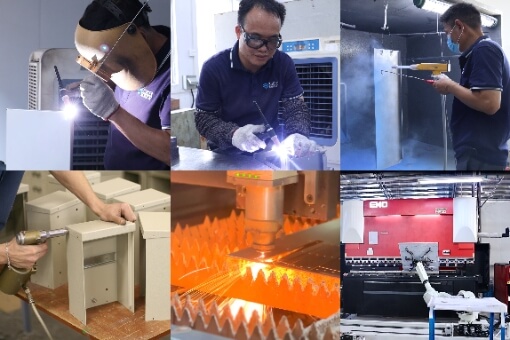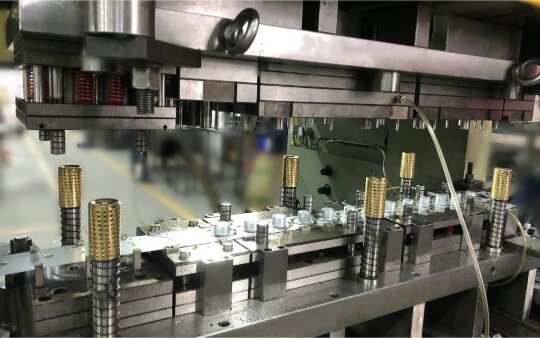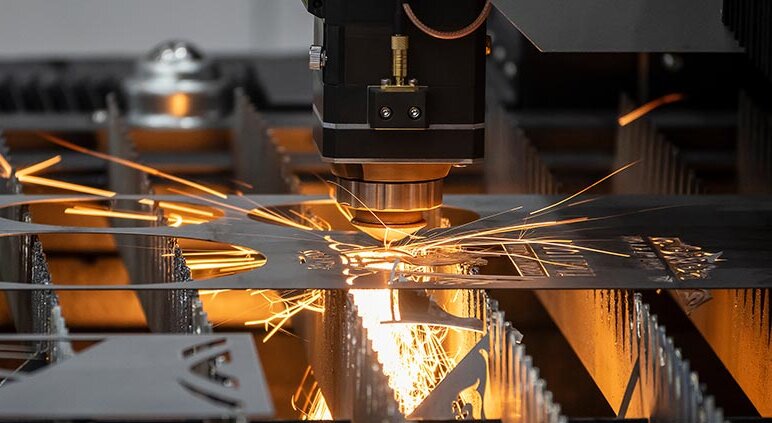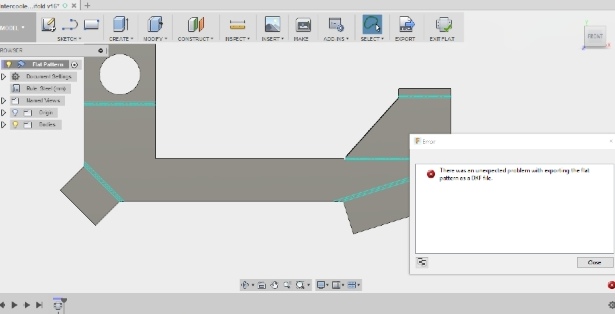Painful welding jobs and wasted materials? It’s frustrating when stainless steel welding doesn’t go as planned. You’ve likely tried your hand at flux core welding, only to encounter challenges like inconsistent welds or troublesome spatter. The good news is that mastering flux core welding for stainless steel is entirely within reach.
Flux core welding stainless steel is efficient but requires precision and practice. You need to understand the specific challenges that come with it, like controlling heat and preventing oxidation. You can overcome these challenges and produce high-quality welds by fine-tuning your settings and honing your technique.
There’s no denying that flux core welding on stainless steel can be tricky, but don’t let that discourage you. Let’s break down the process into manageable steps so you can confidently tackle your next project.
Understanding Flux Core Welding Stainless Steel
FCAW: Definition and Basics
Flux Core Arc Welding is a versatile welding method used primarily for thick materials or welding out of position. The welding process uses a tubular consumable electrode continuously fed with flux and a constant voltage power supply. This method simplifies the welding process because it doesn’t require an external shielding agent, making it ideal for windy and outdoor conditions.
What are the differences between FCAW and other welding processes?
FCAW differs from other methods like MIG welding (Metal Inert Gas), which uses the same wire feed but requires an external gas shield to protect the weld. FCAW, unlike TIG (Tungsten-Inert Gas), produces cleaner welds but requires more excellent skill. It is easier to master and perform and has high welding speeds. FCAW also overcomes stick welding’s limitations by reducing the frequency of rod changes and allowing for longer welds without interruption.
Types of Flux-Core Welding Wires
The choice of flux-core wire has a significant impact on the application and quality of the weld. Flux core wires are available in two main types:
- Self-shielded: This wire does not require an external gas supply, making it suitable for outdoor use.
- Gas shielded: They require a shielding gas and are usually used indoors to produce cleaner welds. These are perfect for creating smoother appearances of the bead and reducing spatter.
Preparing for Flux Core Welding
Necessary Equipment and Tools
You’ll need a few essential items to get started with flux-core welding:
- Welding Machine: Ensure it’s capable of flux core welding.
- Flux core wire: Select according to the materials and environment of the weld project.
- Consumables and Welding Guns: This includes contact tips, nozzles, and liners suitable for flux core wiring.
- Wire feeder: To ensure consistent feeding of the wire during welding.
- Personal Protective Equipment: Includes a welding helmet and gloves.
Safety Gear and Precautions
The intense heat, light, and fumes produced by flux core welding make it dangerous.
- Wear a Welding Helmet: Protects from harmful UV light and debris.
- Wear flame-resistant clothing: Prevents injuries from sparks, spatters, and other flammable materials.
- Welding Gloves: Essential hand protection.
- Proper Ventilation: It is necessary to avoid inhaling harmful fumes.
- Fire Extinguisher: Always keep one on hand for fire emergencies.
Surface Preparation for Stainless Steel
It is essential to prepare the stainless steel surface correctly for successful welding:
- Clean Surfaces: Remove contaminants such as grease, oil, or dirt with a suitable solvent.
- Remove oxides: Use a stainless steel brush or grinding disc to remove any oxides on the surface. These can affect the weld’s quality.
- Ensure a Good Fit-Up: Align and secure the pieces to be adequately welded to avoid gaps and misalignment during welding.
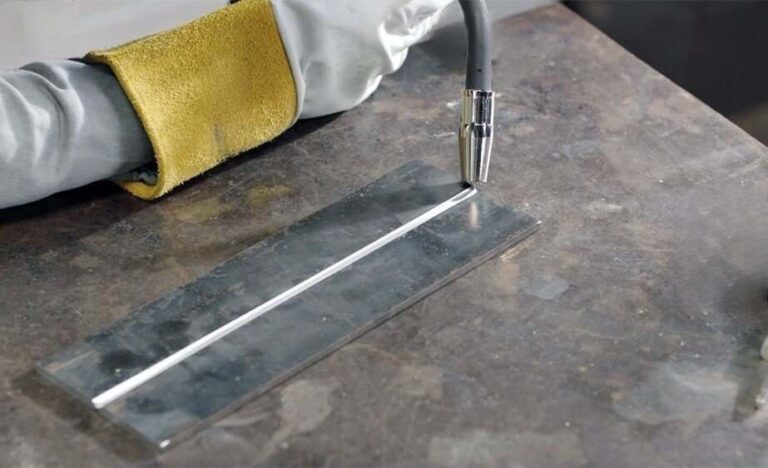
Choosing the suitable flux core wire for stainless steel
Flux core wires suitable for stainless steel
The choice of flux core wire for stainless steel welding is essential. There are two main types of stainless steel flux core wire:
- AWS 308LT: Ideal stainless steel 304 with good corrosion resistance.
- AWS 309LT: Best to weld stainless steel 309 or mild steel.
- AWS 316LT: Provides superior corrosion resistance to chlorides, in particular.
What is the best wire size and type?
The thickness of stainless steel and the position for welding determine the size and type of wire to use.
- Wire size: Thicker (around 0.045 inch or more significant) wires weld thicker materials in flat positions due to their higher heat input. For thinner materials and all-position welding with less heat input, thinner wires (around 0.30 inches) provide better control.
- Type: Determine whether you require a self-shielded cable for outdoor use or a gas-shielded cable for indoor welding.
Understanding Wire Specifications
The wire specification is critical to the quality of the weld and its applicability.
- Tensile strength: Assures the weld can withstand the loads required without failure.
- Elongation: Indicates the amount of weld that can be stretched before it breaks, which is essential for dynamic or impact loads.
- Corrosion Resistant: Certain wires have specific chemical compositions that enhance their resistance to environmental conditions.
How to Set Up the Welding Machine
Machine settings for Flux Core welding
It is essential to set up your machine correctly for a successful flux core weld. Start by setting up the machine to perform FCAW. This usually involves increasing the voltage compared to other welding methods due to thicker wires and increased material thickness.
Adjusting Voltage, Amperage, and Feeding Speed
The wire diameter and thickness of the material will determine the right setting for voltage, amps, and wire feeding speed.
- Voltage: Adjust voltage according to the thickness of the material; thicker materials require higher voltage. Start at the lower end and adjust according to the appearance of the weld.
- Amperage: Adjust according to wire type and size. For thicker wires, a higher amperage may be required.
- Feed speed: As you increase amperage, the wire feed speed will increase to ensure that the welding arc is consistent.
The Importance Of Proper Polarity
In most flux core welding stainless steel applications, the electrode must be connected to the negative terminal. This configuration increases penetration, which is essential for thicker sections. Double-check the polarity setting of your machine before you start welding to avoid weak welds and poor arc stability.
Techniques for Flux Core Welding Stainless Steel
- Weaving: The torch is moved side to side, covering a large area. This technique helps fill larger joints and ensure even heat distribution.
- Stringer beads: It is best to use straight stringer beads when working with stainless steel. This will minimize the heat input while preventing warping. This technique involves dragging a torch along the joint in a straight, unwove line.
- Whip technique: The torch is moved quickly back and forward along the welding path by moving it slightly backward first. The whip technique helps control heat when welding thin materials or in vertical or overhead positions.
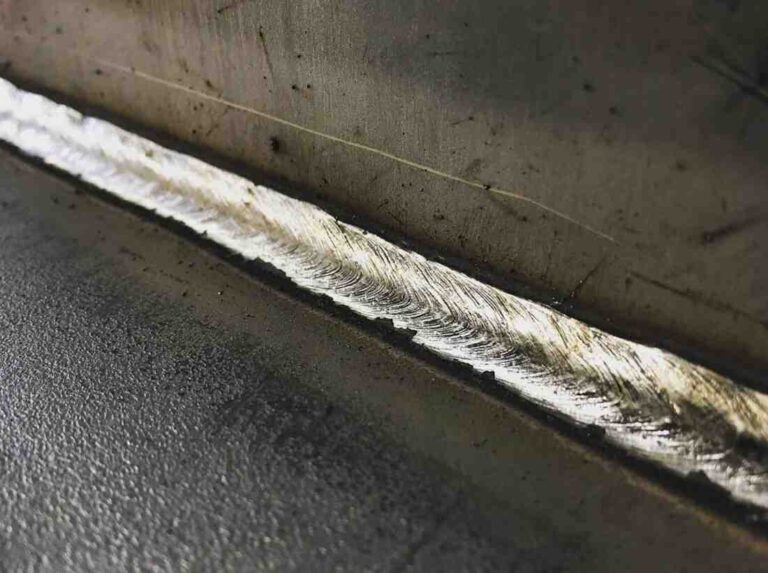
Overcoming Common Welding Defects
How to Identify and Prevent Porosity
Small holes or cavities are caused by trapped gas in a weld. When welding stainless steel using a flux core, you can prevent porosity by:
- Cleanliness is important: Before welding, ensure the surface is free of contaminants such as oil, moisture, and rust.
- Check Gas flow: When using flux core wires with gas shielding, ensure the weld pool is protected from atmospheric gases.
- Adjust the Parameters: Optimize voltage and wire feeding speed to create a stable and steady arc and generate enough heat to burn away impurities.
Addressing Slag Inclusions
Slag inclusions can be defined as non-metallic compounds trapped in the weld metal. Slag inclusions can be reduced by:
- Correct Technique: When welding, use the correct angle and speed to allow the slag to rise to the top of the molten pools.
- Adequate cleaning between passes: Remove any slag before beginning a new pass, especially if you make multiple passes.
Cracks and Distortions: How to Deal with Them
Cracks and distortions may compromise the structural integrity. To resolve these issues:
- Control heat input: Use the appropriate welding parameters to prevent excessive heat, which can lead to warping or residual stresses.
- Pre-heat and Post-heat: Applying pre-heat and post-heat will help reduce thermal gradients, which cause unbalanced expansion and contraction of stainless steel.
- Joint Design and Fit-Up: Make sure that the joint design can penetrate and that all components are correctly aligned to reduce stress during welding.
Controlling Heat and distortion
Heat Control Strategies for Flux Core Welding
It is essential to manage heat effectively when flux core welding stainless steel. This will prevent distortions caused by excessive heat.
- Intermittent welding: Weld in short intervals instead of continuous runs to allow the metal to cool down between welds and reduce overall heat input.
- Adjusting Welding parameters: Optimize the voltage and amperage settings for thickness and type of stainless steel to ensure enough heat is generated without overheating.
- Stitch welding: Alternate locations for the welding to spread the heat evenly over the workpiece. This technique can reduce distortion and localized overheating.
Managing distortion in Stainless Steel Welds
Due to its thermal properties, stainless steel is particularly susceptible to warping and distortion. For this, you can:
- Use of Fixtures: Clamp and fix the parts that will be welded securely to reduce movement and distortion caused by heat.
- Balanced welding technique: Use a balanced approach to weld opposite sides or ends of an assembly to counteract shrinkage pulling.
- Tack-Welds: Make multiple tack-welds to ensure alignment and reduce distortion in the final welding process.
Techniques for Minimizing Warping
Due to the high heat input during flux core welding, warping is typical.
- Preheating: Moderate preheating can reduce the temperature gradient between the weld area and the base material, thus reducing the chance of warping.
- Controlled cooling: Allowing the welds to cool in a controlled atmosphere will prevent the formation of stress that could lead to warping. Avoid water or any other rapid cooling method that could introduce thermal shocks.
- Peening: Gently peening the weld bead between passes can help relieve the weld-induced stresses, thereby minimizing warping.
After-weld Cleaning and Finishing
How to Remove Slag and Spatter
Cleaning up any spatter or slag after the weld is essential to achieve a smooth and clean surface.
- Wire brushing: Scrub off slag with a stainless steel wire brush. It is essential to brush only in the direction of the grain so as not to scratch the surface.
- Sanding and Grinding: Use a sandpaper or grinding tool for tougher spatter. Start with coarse grits and move up to finer ones to avoid deep scratches.
- Chemical Solution: Use anti-spattering sprays or specialized welding chemical cleaners to dissolve and remove spatter and slag effectively.
The Passivation and Polishing Techniques
The finishing process for stainless steel welding includes polishing and passivation.
- Polishing: Use discs or belts to polish the desired finish.
- Passivation: This chemical treatment increases the natural corrosion resistance in stainless steel.
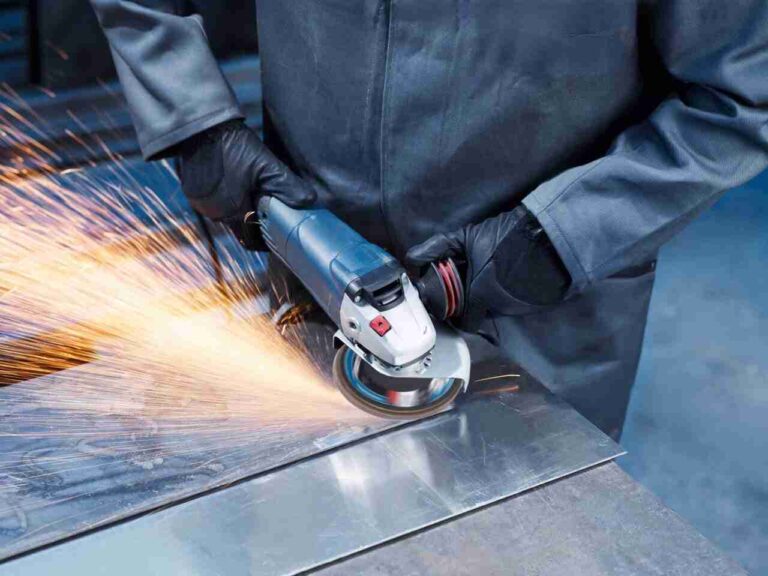
Welding Stainless Steel alloys
Welding Different Stainless Steel Alloys: Considerations
Understanding the unique properties of different stainless steels is essential to ensuring robust and corrosion-resistant welding. The following are key considerations:
- Thermal Expansion and Conductivity: Different metals have different thermal expansion and conductivity rates. Austenitic and ferritic alloys differ in their thermal conductivity and thermal expansion.
- Corrosion Resistant: Choose a filler equal to or greater than the corrosion resistance of your base metal to maintain integrity when exposed to corrosive conditions.
- Interpass and Preheat Temperatures: Certain stainless steels (especially martensitic or duplex) may require controlled interpass and preheat temperatures to prevent cracking.
Specific Techniques for Duplex Stainless Steels and Austenitic Stainless Steels
- Duplex Steels: Duplex stainless steels combine austenitic-ferritic structures and are valued for their strength and resistance to corrosion. Use lower heat input to maintain the balance between austenite and ferrite phases. This can be achieved using a higher welding speed or a lower amperage. Also, make sure to select a suitable filler for your duplex composition.
- Austenitic Stainless Steels: These are non-magnetic and have a high nickel and chromium concentration, making them corrosion-resistant. However, they can be prone to cracking when heated. Use a low-heat input to minimize cracking and ensure the joint design allows adequate filler material diversion.
Avoiding Cross-Contamination With Other Metals
Cross-contamination in stainless steel welds can severely compromise the corrosion resistance and mechanical properties.
- Use Specialized Tools: Only use stainless steel brushes, grinders, and cutting tools.
- Cleaning: Make sure that the area of welding and the workpiece are free of iron particles, dust, and other contaminants. Regular cleaning and passivation may be necessary to maintain the integrity of surfaces.
- Proper storage: Store stainless-steel materials and consumables far away from carbon-steel items to avoid contamination by airborne particles.
Troubleshooting common issues
Diagnose problems with Arc Stability.
It is essential to maintain arc stability to achieve a consistent, smooth weld. The following are some of the most common causes of arc instability when flux core welding:
- Incorrect voltage or amperage: Ensure settings are suitable for wire size and thickness. A few adjustments may be required based on observed arc characteristics.
- Improper Feeding of Wire: Ensure the wire path is smooth, and the feeder rolls have not been worn out or are sized incorrectly.
- Consumables that are contaminated or damaged: Inspect and replace any contact tips, nozzles, or liners that may be clogged.
How to fix poor wire feeding and burn back
Burnback is a defect that can occur when the wire feeds into the contact tip of the welder.
- Adjust Feeding Speed: Make sure the feed rate matches the welding current. Mismatches can result in too much or insufficient wire being fed to the arc.
- Check the Wire Spool and the Feeder: Ensure the wire spool rotates freely and the feeder path is not too tight.
- Maintain Your Equipment: By replacing worn-out parts and performing regular maintenance on the wire feeder, you can avoid feeding problems and extend the life of your equipment.
Weld Appearance Issues
The appearance of the weld is indicative of its overall quality. Spatter, an uneven bead profile, or discoloration are all common issues.
- Reduce Spatter: Adjust voltage and amperage and ensure the wire is high quality and that all surfaces are clean. Sprays that reduce splash can be used.
- Improve Bead Look: Check the travel speed and angle of the torch. The length of the arc, the travel speed, and other welding techniques can be adjusted to produce a smoother weld.
- Avoid Discoloration: Apply the appropriate heat to minimize oxidation and ensure the shielded flux core wire is covered correctly.
Conclusion
Understanding how to master flux core welding stainless steel requires a thorough understanding of material properties, welding challenges, and proper technique. You can manage issues such as porosity, distortion, and slag inclusion by carefully choosing the proper flux core, correctly setting up your machine, and using the correct welding techniques. Your welds’ aesthetic and structural quality can be improved by meticulously cleaning and finishing the post-weld area.
Do you need a reliable sheet metal parts manufacturer? Shengen is the place to go. We specialize in sheet metal laser cutting, bending, surface finish, and CNC Machining. Reach out to Shengen Today and seek help from professionals!
FAQs
What is the difference between MIG and flux core welding?
MIG welding requires an external shielding gas. Flux core welding does not. It is, therefore, better suited for outdoor use. This makes it easier to learn, as the surface is more forgiving.
What are the best practices for avoiding porosity?
Clean the surface of the welder thoroughly to prevent porosity. Use the correct machine settings and ensure proper ventilation to maintain a stable arc.
What is the best flux core welding for thin stainless steel?
It is possible to adapt flux core welding for stainless steel thin. To avoid burning through, it is essential to control the heat. Welding at higher speeds and lower voltage and amperage is recommended.
How can I improve the appearance of my welds?
Consistently maintain your torch angle and welding speed to improve the appearance of the weld. For the best results, adjust your machine settings. After the weld, clean and polish it thoroughly.
What are the long-term prospects for flux core welding?
Flux core welding has a bright future, particularly in construction and fabrication. The technology continues to advance, improving its efficiency and applications.
More Resources:
Flux Core vs. MIG Welding – Source: Welding Forless
Preventing Porosity in Welding – Source: Aquasol
Post-Weld Cleaning Techniques – Source: BSSA
Hey, I'm Kevin Lee

For the past 10 years, I’ve been immersed in various forms of sheet metal fabrication, sharing cool insights here from my experiences across diverse workshops.
Get in touch

Kevin Lee
I have over ten years of professional experience in sheet metal fabrication, specializing in laser cutting, bending, welding, and surface treatment techniques. As the Technical Director at Shengen, I am committed to solving complex manufacturing challenges and driving innovation and quality in each project.

